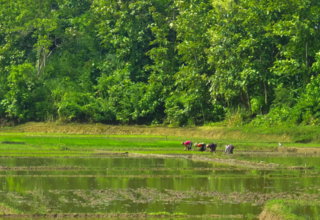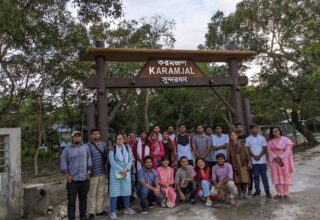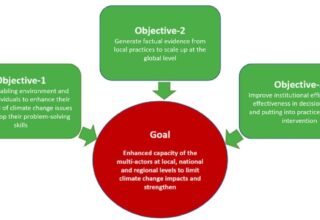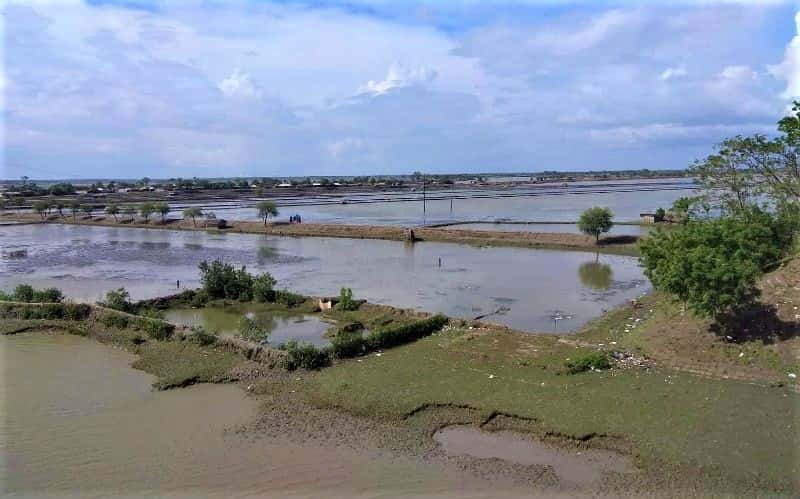
Understanding Bangladesh’s most complex environmental and man-made problem
Most filmmakers that come to document climate change in Bangladesh include a segment on salinity intrusion in southwest Bangladesh. While is salinity intrusion is predicted to be amplified by the sea level rise, there is in fact numerous other contributing factors.
The first of which is tidal surges which occur in the aftermath of cyclones, which scientists predict will become more intense due to climate change. Although cyclone Aila was not a very categorically intense cyclone, the devastating effects of its tidal surge have remained with many villages still struggling with the contamination from sea-water.
Second, there are regions in southwestern Bangladesh that are naturally more saline then others. For instance, rivers at times have been cut off from up stream flow resulting in an increase of salinization as shown by experts.
This leads to the third point, the Farakka Barrage opened in 1972 in West Bengal, which restricts the natural flow of freshwater from the Himalayas into Bangladesh during the monsoon season. With less freshwater (or mishti pani) arriving from upstream, more saline water from the Bay of Bengal intrudes into the Bengal river delta as a consequence.
Another reason saline water from the bay intrudes into Bangladesh is due to the construction of the polders. In the 1950s and 1960s, Dutch and American engineers attempted to “stabilize” land in Khulna Division by construction of what are now 139 polders. Polders are essentially islands protected from riverbank erosion through the construction of embankments on all sides. Unfortunately, one negative ramification of the construction of polders was that tidal flow could no longer disperse along the shore naturally due to the blockage of the embankments. As such, the tidal flow squeezed into tighter channels in-between the polders, and pushed deeper into the Bengal delta.
The final reason for the salinity intrusion witnessed in the region was the construction of shrimp farms from the 1980s on-wards. Originally funded by the World Bank and other aid organizations, shrimp farming massively transformed the southwest region of Bangladesh from primarily sustaining on rice paddy agriculture into shrimp aquaculture. Aside from the many complications this invoked, one significant one was as increase in soil salinity levels, meaning that nearby agricultural land was no longer cultivable.
These factors more or less combine to lead us to the present-day situation. Often described as one of the regions most vulnerable to climate change in the world, the regions vulnerability actually arises from a range of interconnected factors; and it is in this frame that adaptation projects should be proposed.
The question remains on whether or not the southwest region is salvageable from salinity intrusion; or does climate change make it an inevitable doom? The following two case studies examine alternative developments in the region whichallowed for non-saline landscapes.
Polder 22: A story of resistance
The story of Polder 22 is unique in the history of southwest Bangladesh. Unlike other polders in the region, the people of Polder 22 were able to witness the negative consequences shrimp farming would have on their communities and decided to resist, successfully. Unfortunately, activist-leader Karunamoyee Sardar was killed during the protests and there stands today a memorial erected for her valiant efforts.
As Kasia Paprocki and Jason Cons report in their article “Life in a shrimp zone: Aqua- and other cultures of Bangladesh’s coastal landscape”, the difference between Polder 22 and the surrounding polders is stark. While Polder 22 is lush green with intensive on-going agriculture, the surrounding polders are grey with little growing in the soils
Furthermore, when cyclone Aila struck in 2009, the people of Polder 22 reported that they experienced little to no salinity intrusion from tidal water. The reason being that, since they do not have shrimp farms, they do not have sluice gates; and ill-maintained sluice gates played a major in the tidal surges intruding in the surrounding areas.
Polder 22 stands as an example of what the region might have looked like had it not seen the introduction of shrimp farming, which completely transformed the landscape and arguably rendered the region more vulnerable to the impacts of climate change.
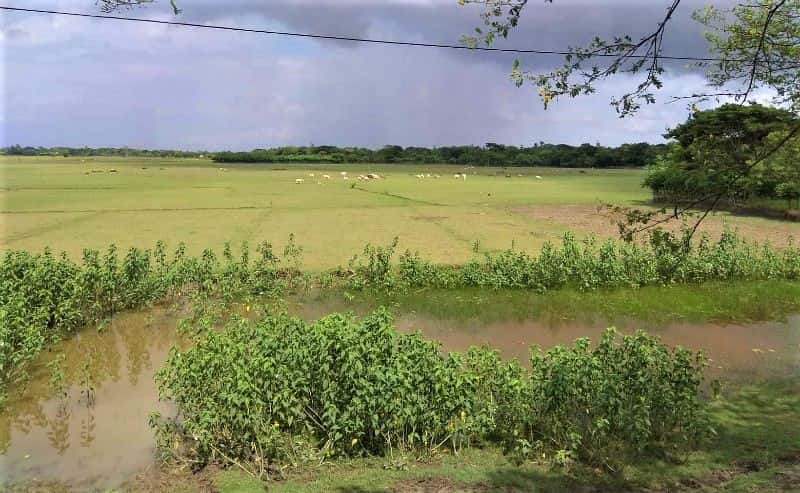
Bilpabla: A story of freshwater prawn
Similarly, Bilpabla is located about 20km west of Khulna city. Unlike other villages in the region, rice paddy fields in Bilpabla were not transformed into ghers for shrimp farming, but into ghers for freshwater prawn farming. The ghers fill up with freshwater from the rain during the rainy season, allowing the cultivation of prawn and other freshwater fish. Although this land-use change prevented the cultivation of aman rice, villagers were instead able to grow boro rice during the winter season since the soil in the village was not saline and therefore cultivable.
Dr Ben Belton, sociologist at Michigan State University, reports in his article “Shrimp, prawn and the political economy of social wellbeing in rural Bangladesh,” that people who lived in Bilpabla not only felt they had more sovereign control over their food production, being able to grow crops they culturally consume, but also contributed to an overall positive social well-being, especially compared to villages that had introduced saline shrimp farming.
While most adaptation projects to salinity in the region are small-scale interventions– such as rainwater harvesting or saline-tolerant rice varieties — perhaps a structural approach would ultimately be more effective. Given the experiences of these two case studies, perhaps soil mitigation efforts could be made to reclaim shrimp farms to allow farmers to grow crops again; particularly for agricultural farms that have only been recently converted to ghers. Tidal River Management (TRM) is another alternative to polder embankments that would require more labour, but would potentially be more sustainable allowing residents to manage tidal flow instead of blocking it. Perhaps the most difficult but most important task of all would be a water-sharing treaty with all countries situated in the Ganges river basin that would allow more freshwater to flow into Bangladesh.
Climate change is a “wicked problem” because of the ways in which it intersects with other environmental and development issues. As such, the most successful adaptation efforts worldwide will be ones which address this complexity.
Originally this article was published on July 19, 2018 at Climate-Tribune (Dhaka Tribune). The author Meraz Mostafa is a research officer at ICCCAD and in charge of providing content to the Climate Tribune.
Email: meraz.mostafa@icccad.net







